| |
|
|
|
"Limbo" efficiency standards have their day in court
 In a San Francisco federal courtroom in mid-January, lawyers laid out a case for why four efficiency standards, caught in a cross-administration limbo, should be published in the Federal Register. The limbo status began in 2016, when DOE "pre-published" completed standards for air compressors, commercial boilers, portable air conditioners, uninterruptible power supplies, and walk-in coolers (standards for walk-ins were officially published in July 2017). The pre-publication started the countdown on a 45-day error correction process, a new procedure instituted after an error in an earlier rulemaking. If no errors are found, the Energy Secretary is supposed to submit the rule for official publication in the Federal Register. Secretary Perry has shown no indication that he will submit the remaining rules for publication even after the 45-day window has morphed into a year. We await a decision by the court.
|
|
California flips lighting standards on!
 On December 22, 2017, a judge in California denied a plea filed by lighting manufacturers to block new light bulb standards from taking effect in California. The lighting industry, represented by the National Electrical Manufacturer's Association (NEMA), claimed that the California Energy Commission (CEC) standards for general service lamps (GSLs), LEDs, and small diameter directional lamps were preempted by federal law. After the plea was denied, the new CEC lighting efficiency standards went into effect as planned on January 1, 2018. Similar federal standards covering a broader scope of GSLs are scheduled to go into effect in 2020. Both the CEC and federal standards require that GSLs meet an efficiency level of 45 lumens per watt (lumens is a measure of brightness), making them about 65% more efficient than old-style incandescent bulbs. The California case is still pending a final resolution.
In the meantime, the standards are in effect.
|
|
ACEEE and ASAP statement on federal plans to put updates to appliance standards on ice
On December 13, 2017, the American Council for an Energy-Efficient Economy (ACEEE) and ASAP issued the following joint statement after the Administration published their Fall 2017 regulatory agenda:

"The US Department of Energy (DOE) has indefinitely deferred action on 20 appliance energy efficiency standards, based on the Fall 2017 Unified Agenda of Regulatory and Deregulatory Actions. By deciding not to honor statutory deadlines for these standards, DOE is jeopardizing billions of dollars in savings for American families and businesses, while also creating uncertainty for manufacturers and markets."
"The efficiency standards completed through 2016 are already saving the average American household about $500 on its energy bills each year. By 2035, the required updates could save consumers and businesses another $43 billion annually."
"Periodically updating these standards, as required by law, guarantees that all consumers benefit from technological progress that delivers dramatic energy savings. In order to ensure additional energy savings for families and businesses, as well as continued reductions in greenhouse gas emissions, DOE must fulfill its legal obligations to update energy efficiency standards."
For a list of missed DOE deadlines, click
here.
|
|
Lighting loophole widens
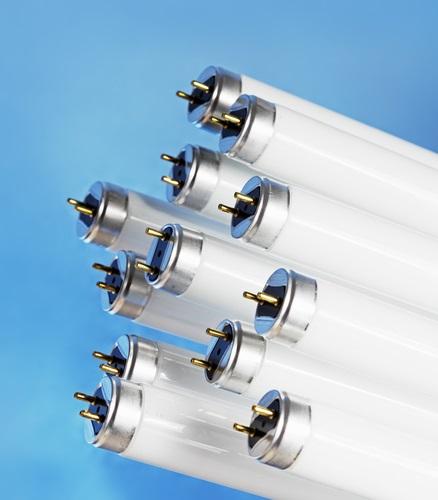
The next tier of federal standards for general service fluorescent lamps (GSFL) just took effect. Unfortunately, the update will not fix a loophole in the GSFL standard, and may actually make it worse.
The federal GSFL standards that took effect in 2012 were supposed to drive T12s, an older, less-efficient type of fluorescent lamp from the market in a couple years. But a loophole in the standard allows T12s to remain available across the country. T12s accounted for 12% of new fluorescent lamp shipments in 2017 and all 64 million of them had a color rendering index (CRI) of 87 or higher, which made them exempt from the federal GSFL standards. Before 2012, fluorescent lamps with CRIs of 87 and above were expensive and rare and used only in specialty applications. The Department of Energy (DOE) excluded them from the standards as a niche product. Fluorescent lamp technology has progressed since then and today the lighting industry can make an inefficient T12 lamp with a high CRI rating (90 is common), for a relatively low price. T12 lamps taking advantage of this loophole are now offered by Philips, GE, Sylvania, and many smaller producers.
T8 and T5 lamps are subject to the same federal GSFL standard as T12s, and at least one manufacturer is taking advantage of the loophole to market an inefficient T8 lamp. Because T8 lamps made up 62.7% of the U.S. fluorescent lamp market in 2017, the impact of the loophole for T8 lamps could be huge. Unlike T12s, T8 lamps have no problem meeting the latest update to the federal GSFL standards that took effect last week. But standards-compliant T8 lamps must compete with the Sylvania 22439 - FO32/V50/ECO, which has a CRI of 90, is 14% less efficient than the standard, and goes for the relatively low price of $1.61/unit in a case of 30 on
1000bulbs.com. If the recent GSFL standards upgrade makes compliant lamps more expensive, it will tip the market in favor of this loophole lamp and others like it.
This loophole would be difficult to repair at the national level. However, because high-CRI fluorescent lamps are excluded from the federal GSFL standards, states are allowed to set their own standards for them. Several states currently considering bills based on ASAP's 2018 state energy efficiency standards model legislation would require fluorescent lamps with CRIs of 87 and above to be as efficient as normal-CRI lamps under the federal GSFL standards. The California Energy Commission has also included standards for high-CRI fluorescent lamps in its current rulemaking calendar.
|
|
What's up with DOE enforcement?
DOE ENFORCEMENT ACTIVITY 2016 AND 2017
|
2016 |
2017 |
| # of enforcement orders |
18 |
12 |
| # of penalties assessed |
14 |
6 |
| $ range of penalties |
$200 to $1.5 million |
$800 to $735,400 |
DOE issued enforcement orders to manufacturers (including importers) for manufacturing and distributing products that did not meet minimum efficiency standards. Penalties were assessed in 78% of enforcement cases in 2016 and 50% of enforcement cases in 2017. When a penalty was not assessed, DOE typically issued a settlement requiring the m
anufacturer to cease distribution of the non-compliant product(s) and to inform all parties to whom products were distributed.
In addition, DOE issued 18 "failure to certify" notices in 2016 and 14 in 2017. The notices were sent to manufacturers for failing to submit reports showing that products had been tested and met efficiency standards. In most cases, DOE offered a settlement, requiring the company to certify their products and to pay a fine, typically $8,000 or $16,000.
Affected products include s
plit system air conditioners, commercial freezers, dehumidifiers, distribution transformers,
r
efrigerator/freezers, and showerheads
. The number of violations varied widely depending on the number of models. For example, a transformer manufacturer had a single violation whereas a showerhead manufacturer had 12,158 violations based on many units of multiple models.
Strong enforcement benefits consumers by making sure that products on the shelf meet minimum efficiency levels. Enforcement efforts also ensure that manufacturers, whether domestic or foreign, compete on a level playing field.
|
|
North American neighbors moving efficiency forward
CANADA
 Natural Resources Canada (NRCan) released their
2017-2019 Regulatory Plan, in which they commit to
improving energy efficiency standards for consumer and commercial products, aligning with US efficiency standards, and collaborating with North American partners on actions to reduce climate change. NRCan announced three amendments:
Amendment 14, which will be finalized soon, seeks to align Canadian standards with 17 recent US DOE product standards, subject to an analysis of Canadian market conditions. Products covered include residential dehumidifiers and furnace fans; commercial products such as walk-in coolers, air conditioners and heat pumps; and lighting products such as ceiling fan light kits.
Amendment 15 looks to align standards for an additional 11 products and to potentially go beyond US standards for 6 heating products: gas fireplaces, residential gas furnaces, residential and commercial gas boilers, tankless water heaters, and commercial water heaters. Amendment 15 is currently under development.
Amendment 16 considers 15 additional product categories for new or updated standards, including two products -- portable air conditioners and compressors -- for which US DOE completed rulemakings but has not yet published rules in the Federal Register. (See related "Limbo" article above). Work on Amendment 16 will get underway in 2019.
NRCan is also considering updating lighting labeling requirements for general service lamps.
MEXICO
The California Energy Commission (CEC) signed a Memorandum of Understanding (MOU) with the Mexican State of
Aguascalientes in 2017 to cooperate on clean energy policies and programs. This is the third such agreement between Mexico and the CEC, following an MOU with the Mexican Ministry of Energy in 2014 and another with the State of Jalisco in 2016. The government entities plan to work on areas of mutual interest including renewable energy, clean energy technology, and energy efficiency.
|
|
Household water use dropping

A report by the Water Research Foundation shows that average indoor daily water use declined by 22% per household between 1999 and 2015. According to the
Residential End Uses of Water, Version 2 (2016), clothes washers and toilets led the way, with daily water use declining over 16 years by 42% and 27%, respectively. The authors note that "improved water efficiency of washers and toilets accounts for most of the decreases in indoor use."
Programs and policies that have contributed to the drop during this time period include WaterSense and efficiency standards. In 2006, t
he Environmental Protection Agency (EPA) launched WaterSense, a program that helps consumers find and select water-efficient products. Clothes washer efficiency steadily improved with incrementally better standards taking effect in 2004, 2007, 2011, and 2015. Though no federal toilet standards were introduced between 1999 and 2015, the original national standards enacted in 1992 had an effect on water usage during the study period. In addition, after DOE waived the federal preemption requirements, more stringent toilet efficiency standards went into effect in C
alifornia, Colorado, Georgia, New York City, and Texas.
The report also shows that four products --
toilets, faucets, showerheads, and clothes washers -- make up 80% of a household's indoor water use. Leaks, baths, dishwashers and other factors make up the remaining 20%. Clothes washers dropped from #2 to #4 during the 16-year period.
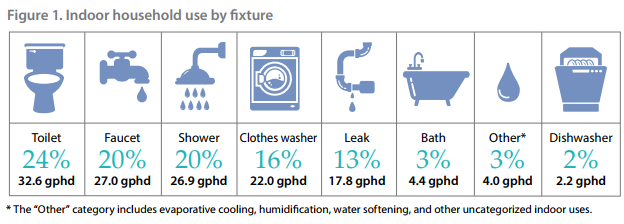
DeOreo et al. 2016. Reprinted with permission. © Water Research Foundation.
DeOreo, W. B., P. Mayer, B. Dziegielewski, and J. Kiefer. 2016. Residential End Uses of Water,
Version 2: Executive Report. Project #4309A. Denver, Colo.: Water Research Foundation.
|
|
State of the states
NEW YORK
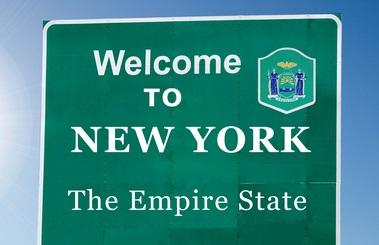 In a January 3rd press release highlighting his agenda for the 2018 State of the State, New York Gov. Andrew Cuomo signaled his intent to establish appliance efficiency standards as follows: In a January 3rd press release highlighting his agenda for the 2018 State of the State, New York Gov. Andrew Cuomo signaled his intent to establish appliance efficiency standards as follows:
"NYSERDA will propose the establishment of appliance efficiency standards, with support for implementation from the Clean Energy Fund.This strategy is proven to achieve significant energy savings and is a function recently abdicated by the federal government. As co-chair of the U.S. Climate Alliance, New York State will work with its partners in other states to help scale state-level appliance efficiency. Working through the U.S. Climate Alliance and with other partners, New York State will provide certainty to manufacturers that appliance efficiency standards must be met across the United States."
CALIFORNIA
 On January 19, the California Energy Commission (CEC) issued an order to begin a rulemaking proceeding for the following products: On January 19, the California Energy Commission (CEC) issued an order to begin a rulemaking proceeding for the following products:
-Compressors (including air compressors);
-Hearth products;
-High color rendering index linear fluorescent lighting;
-Portable air conditioners; and
-Uninterruptible power supplies
In addition, several rulemakings are still underway. For more information, consult this list of CEC appliance efficiency rulemakings or click on products of interest below:
-Pool pump motors and portable electric spas
-Commercial tumble dryers and air filter labeling
-Fans and blowers, GSLs, sprinkler spray bodies, tub-spout diverters and irrigation controllers; Roadmaps for set-top boxes, solar inverters, low-power modes and power factor
OTHER STATES
 Legislators in Massachusetts, Vermont, and Washington filed bills to update or to set new appliance efficiency standards. The products included in the bills vary by state but all include products detailed in the ASAP/ACEEE States Go First report. The Washington Technology and Economic Development Committee voted HB 2327 out of committee on January 25. The Vermont House overwhelmingly passed H 410 on a voice vote on February 1. In Massachusetts, the committee has not yet voted on H 3404. Legislators in Massachusetts, Vermont, and Washington filed bills to update or to set new appliance efficiency standards. The products included in the bills vary by state but all include products detailed in the ASAP/ACEEE States Go First report. The Washington Technology and Economic Development Committee voted HB 2327 out of committee on January 25. The Vermont House overwhelmingly passed H 410 on a voice vote on February 1. In Massachusetts, the committee has not yet voted on H 3404.
If your state is interested in pursuing standards, please check out our States Go First report or contact Marianne DiMascio at ASAP for more information.
|
DOE update 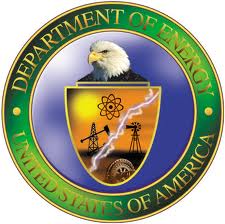
DOE actions below are in addition to actions highlighted in articles and blog posts above.
EFFICIENCY STANDARDS
Ceiling Fans
DOE published a final rule for standards for ceiling fans in January 2017. However, DOE subsequently twice delayed putting the standard into the Code of Federal Regulations (i.e. the "effective date"). After a coalition of states and consumer and environmental groups sued DOE over the delays, DOE published a notice indicating that the effective date would not be further delayed and confirming the original January 21, 2020 compliance date (by which manufacturers must comply with the standards). The new standards are the first efficiency performance standards for ceiling fans and will reduce energy consumption by about 40% relative to the least-efficient fans available today.
General Service Incandescent Lamps (GSIL)
On August 15, 2017, DOE issued a Notice of Data Availability (NODA) to solicit comments on GSIL market data provided by NEMA and a request for public input. The NODA/RFI was the result of a legal settlement between DOE and NEMA. Under the settlement terms, DOE is supposed to issue revised proposed incandescent light bulb standards in 2018. In
our comments
, ASAP pointed out that such standards could only be higher than the 45 lumens per watt "backstop" general service lamp standard established by Congress which takes effect in 2020.
Rough and Vibration Service Lamps
In 2015, DOE determined that sales of rough and vibration service light bulbs exceeded thresholds that indicate they have become a loophole in the national light bulb standards. DOE subsequently missed a deadline to set standards for these bulbs by rule, causing specific requirements in federal law to kick in. DOE issued the final rule for codifying these requirements in December 26, 2017. Effective January 25, 2018 rough and vibration service lamps manufactured or imported into the US may not be rated above 40 W and may only be sold in single-unit packaging. Rough service lamps must also include a shatter-proof coating.
DOE initiated reviews for a number of test procedures during 2017, in part to fulfill legal requirements to review each test method at least once every seven years. The paragraphs below summarize some of the key issues for each review and provide links to comments filed by ASAP and our allies.
Distribution Transformers
In
comments filed with DOE, ASAP and ACEEE recommended that DOE update the distribution transformer test procedure to reflect average loading consistent with field data. Based on data from the DOE's prior work on transformers, average loads for all types of distribution transformers are lower than those used in the current test procedure. In addition, DOE may be able to further improve the representativeness of the test procedure with a rating based on a weighted average of load points.
General Service Fluorescent Lamps (GSFLs), Incandescent Reflector Lamps (IRLs
), and GSIL
DOE is proposing to update these test procedures to bring them in line with the latest lighting industry test procedures. DOE is also proposing to require that incandescent lamps include the same voltage requirements as compact fluorescent lamps and integrated light-emitting-diodes lamps. ASAP commented that this change could potentially open up a loophole allowing some incandescent light bulbs to avoid meeting current GSIL energy efficiency requirements.
Room Air Conditioners (ACs)
The current test procedure measures the performance of room ACs only at full load (i.e. performance on the hottest days). The drawback of this approach is that the test procedure does not capture the potential energy savings from variable-speed compressors, which can improve efficiency by matching the load. Variable-speed compressors can also provide more precise temperature control and improved dehumidification while also reducing noise levels.
ASAP commented that amending the test procedure for room ACs to capture part-load performance would enable variable-speed technology to compete on a level playing field.
Refrigerators and Freezers
Manufacturers have started to introduce refrigerators with display screens and "connected" functionality. However, the energy use of these features is not captured in the current test procedure. ASAP comments note that amending the test procedure to capture this additional energy use would encourage manufacturers to provide the additional functionality with low power consumption.
Small Electric Motors and Electric Motors
ASAP
comments supported DOE adoption of existing industry test procedures that cover a range of motor types that are currently outside the scope of DOE procedures. Such adoption would provide for consistent, comparable efficiency ratings for these motor types. In addition, current test procedures measure efficiency at full load, a condition rarely met in the field. DOE's test procedures would be more representative if they reflected a range of loads and the benefits of speed control.
|
|
Energy Star update
Pool Pumps
 EPA is revising the ENERGY STAR specification for pool pumps. In 2017, DOE finalized the first national standards for pool pumps, which will effectively require variable-speed pumps for in-ground pools as of 2021. EPA is proposing to align the ENERGY STAR specification with the DOE test procedure and efficiency metric and to establish both Version 2.0 and Version 3.0 of the specification. Version 2.0 would take effect sometime in 2018 and would align with the DOE standards for most in-ground pool pumps. Version 3.0, which would be more stringent than the DOE standards for all pump types, would take effect at the same time the DOE standards take effect in 2021. This approach would allow manufacturers to plan for both the DOE standards and the ENERGY STAR specification change concurrently, and would encourage the development of pool pumps that not just meet, but exceed the DOE standards. EPA is revising the ENERGY STAR specification for pool pumps. In 2017, DOE finalized the first national standards for pool pumps, which will effectively require variable-speed pumps for in-ground pools as of 2021. EPA is proposing to align the ENERGY STAR specification with the DOE test procedure and efficiency metric and to establish both Version 2.0 and Version 3.0 of the specification. Version 2.0 would take effect sometime in 2018 and would align with the DOE standards for most in-ground pool pumps. Version 3.0, which would be more stringent than the DOE standards for all pump types, would take effect at the same time the DOE standards take effect in 2021. This approach would allow manufacturers to plan for both the DOE standards and the ENERGY STAR specification change concurrently, and would encourage the development of pool pumps that not just meet, but exceed the DOE standards.
Ceiling Fans
 EPA has revised the ENERGY STAR specification for ceiling fans. The new Version 4.0 specification, which will take effect in June 2018, aligns with the new DOE test procedure and efficiency metric. Most ceiling fans use conventional induction motors, and the 2020 DOE standards are based on the performance of ceiling fans with more-efficient induction motors. The ENERGY STAR specification is based on the performance of ceiling fans with brushless DC motors, which can cut energy consumption in half. EPA has revised the ENERGY STAR specification for ceiling fans. The new Version 4.0 specification, which will take effect in June 2018, aligns with the new DOE test procedure and efficiency metric. Most ceiling fans use conventional induction motors, and the 2020 DOE standards are based on the performance of ceiling fans with more-efficient induction motors. The ENERGY STAR specification is based on the performance of ceiling fans with brushless DC motors, which can cut energy consumption in half.
Televisions
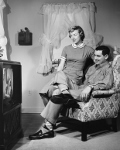 This new version of the ENERGY STAR for televisions specification becomes effective on July 1, 2018, and addresses the energy consumption impact of new functionalities that manufacturers are increasingly building into new televisions, such as Motion Detection Dimming. However, like the California state energy efficiency standard for televisions, the ENERGY STAR for televisions specifications are dependent upon DOE's television test procedure, which is now functionally obsolete.
This new version of the ENERGY STAR for televisions specification becomes effective on July 1, 2018, and addresses the energy consumption impact of new functionalities that manufacturers are increasingly building into new televisions, such as Motion Detection Dimming. However, like the California state energy efficiency standard for televisions, the ENERGY STAR for televisions specifications are dependent upon DOE's television test procedure, which is now functionally obsolete.
Uninterruptible Power Supplies (UPS)
EPA issued v. 1.0 of the UPS ENERGY STAR specification in 2012. Since then, the market share of complying UPS has reached close to 100%. The increased efficiency requirements in the updated specifications are intended to reduce the market share of complying product down toward 25%. Version 1.1 is effective now, and v. 2.0 becomes effective January 1, 2019. Manufacturers may qualify their products under the v. 2.0 specification starting on December 22, 2017.
|
|
Fun facts
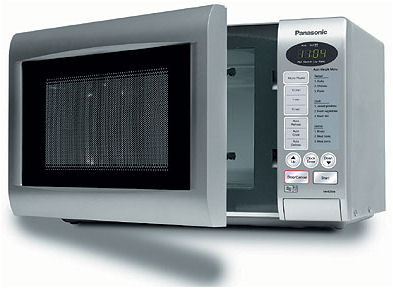 According to the 2015 Residential Energy Consumption Survey, the microwave oven is the most-used appliance and the dishwasher is the least-used appliance. Over 90% of US households have and use a microwave while 54% have and use a dishwasher. About 20% of the 80 million households that own a dishwasher did not use it in 2015.
According to the 2015 Residential Energy Consumption Survey, the microwave oven is the most-used appliance and the dishwasher is the least-used appliance. Over 90% of US households have and use a microwave while 54% have and use a dishwasher. About 20% of the 80 million households that own a dishwasher did not use it in 2015.
For more information: See
Today in Energy
|
|
| |
|
For more info:
Marianne DiMascio, Appliance Standards Awareness Project [email protected]
339-933-8140 |
|
|
|
The ASAP Blog
Read our recent blog posts:
Automatic commercial ice makers:
Residential and commercial clothes washers:
A new spin on clothes washer efficiency coming in 2018 |
|
In the news
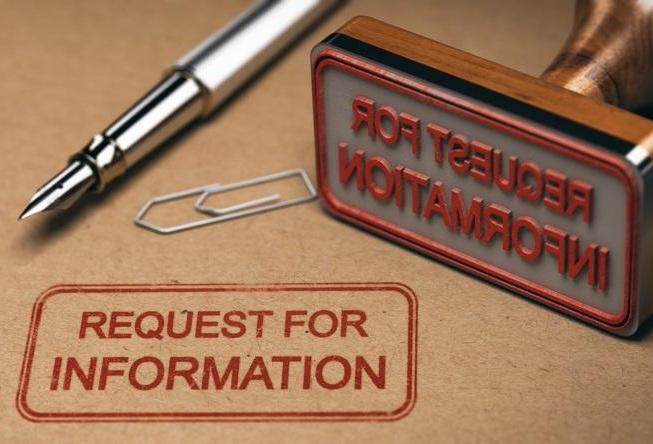 DOE issued two RFIs for appliance standards in December -- one asking for information about market-based approaches and the other seeking to review the procedures used in DOE rulemakings. Greenwire covers them here:
|
|
ASRAC meets again
DOE's Federal Appliance Standards and Rulemaking Advisory committee (ASRAC) met in January - the first meeting of the group since the start of the Trump administration. The committee, which makes recommendations to DOE about appliance standards and test procedures,
approved a working group to negotiate standards and test procedures for variable refrigerant flow (VRF) air conditioners. They also registered their support for the portable air conditioner standard completed by DOE in 2016, but not yet published.
The n
ext ASRAC meeting is April 10.
|
|
Saving water with WaterSense
|
|
|
The world needs efficiency
An October 5th report from the International Energy Agency finds that, "In 2016, the world would have used 12% more energy had it not been for energy efficiency improvements since 2000 -- equivalent to adding another European Union to the global energy market." The findings warn that global efficiency gains may slow down if new efficiency policies are not implemented.
|
|
Fun facts
 Which appliance do you use the most?
Which do you use the least?
Which appliance do you use the most?
Which do you use the least?
a. clothes washer
b. clothes dryer
c. dishwasher
d. microwave
e. stove
See if it matches up to US EIA's
Today in Energy
survey about the most and least used appliances in our home.
See answers below.
|
|
| |
| |
| |
|